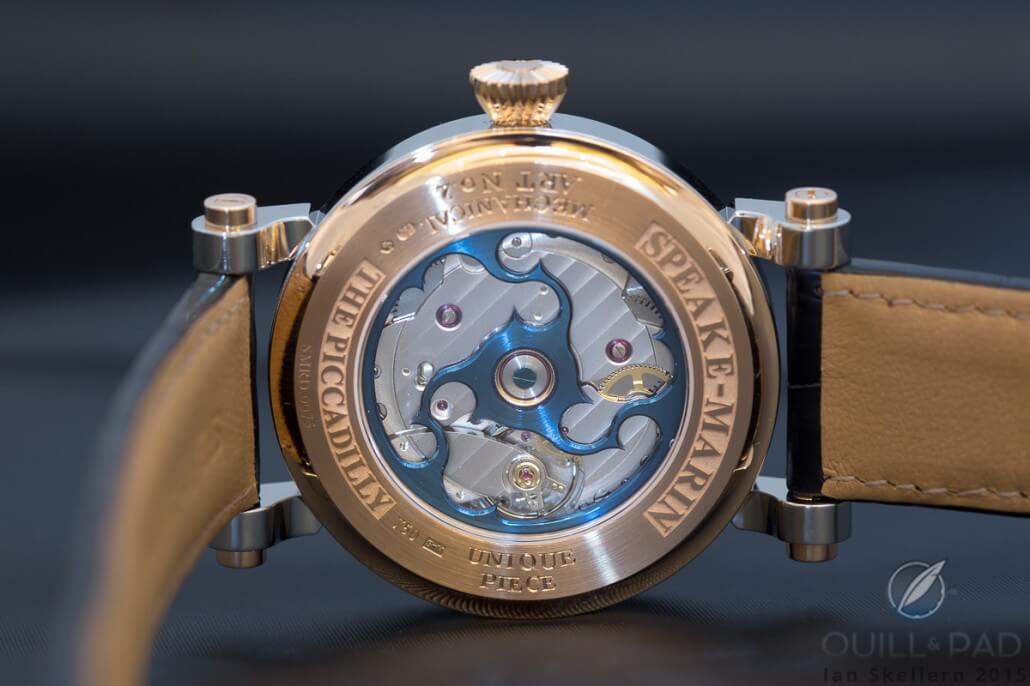And here we go again
With all the things we said
And not a minute spent
To think that we’d regret
These words and hold our breath…
I don’t know where I’m goin’
But I sure know where I’ve been.
An’ I’ve made up my mind,
I ain’t wasting no more time.
Here I go again.
That little music mishmash featuring lyrics from the old-school 1980s band Whitesnake and the new-school alternative-rock group Paramore is a perfect intro to the subject of inevitability. This is the idea that no matter what actions or precautions are taken, something that is inevitable cannot be stopped from happening.
Such an occurrence can be thought of negatively (in the case of our inevitable death) or it can be thought of as positive, something akin to fate or destiny.
Either way, if something is inevitable it is statistically bound to happen, or at least the odds against it happening are so astronomically low that the likelihood can be disregarded. As such, I have noticed that in life people experience inevitability in ways they may not notice.
Take, for example, a child growing up in an area dominated by the sport of soccer, or, as other countries call it, football. The sheer chance of them becoming attracted to or fascinated by that sport borders on certainty, whereas the likelihood of them becoming ardent lacrosse fans is tremendously low.
It’s not that they might not like lacrosse; it’s simply that they will have a hundred thousand times more exposure to soccer than a sport not even played within a thousand miles of their home. So it could be said to be inevitable that they will at the very least be soccer fans.
There are many examples of this form of inevitability all around us, shaping our lives and, by default, eliminating choices before they are even a choice.
We also play a role in this inevitability by consciously choosing things repeatedly based on our interests and our passions. As we do this, we drive ourselves towards inevitable conclusions; being depressed when Game of Thrones kills off a main character (basically every episode), eating the last donut after buying a box for the office, or sleeping in on Saturday after a late night watching the dodgeball playoffs on ESPN 8: The Ocho.
Here I go again
So, like I said at the beginning – here I go again. I, by way of my choices, have inevitably led myself to this point in which I get the chance to talk about something that our readers probably know I love all too well: a jump hour watch.
But not just any jump hour watch, this time it’s the four-handed Speake-Marin Jumping Hours, a piece unique.
You might remember that in Jump Hour: A Love Story you were given a sneak preview of the Speake-Marin Jumping Hours. Well, that also happened to be my own sneak peak as I found out about the piece while I was writing the story. Needless to say, I was extremely excited, not to mention anxious, to learn more and possibly get the chance to get my hands on the piece. I had to wait two long months, but the wait was worth it.
While in Geneva for SIHH 2015, the Quill and Pad team visited with Peter Speake-Marin. Over discussions about a new, not-so-secret agent ambassador we were given ample time with the “1 of 1” Jumping Hours watch. I was floored.
Mighty appreciation
First off, my appreciation for everything Speake-Marin started a long time ago and was strengthened the very first time I spoke with Peter Speake-Marin. I asked him personally for advice on becoming a watchmaker, to which he obliged with much more loquaciousness than I had expected. Continuing the pattern, he was more than happy to field my questions about the Jumping Hour watch and more specifically the mechanism (or mechanisms, since there are four) and the details behind it.
When choosing a direction for a jump hour mechanism, one must decide what attributes one is looking for to ascertain which design direction will be selected. In this case, Peter wanted to showcase the most straightforward jump hour mechanism that, with its history, might well be the most-used jump mechanism in a watch. That mechanism, if you haven’t figured it out yet, is the double star wheel.
Comprising two different-sized, twelve-spoke star wheels, the jump mechanism relies on carefully adjusted springs, precisely aligned wheels, and perfect proportion to achieve the proper force-to-movement ratio.
The first star wheel will slowly be activated by a single-toothed wheel attached to the minute hand. A spring holds tension on the first star wheel in one of its twelve notches, meaning that the wheel will slowly start to rotate as the time passes while still being held by the spring. At a certain point, the pointed spring will slip from one notch to the next, and the star wheel will advance suddenly. If the hand had been attached to this wheel, the change would not have appeared instantaneous.
The secret is in the second star wheel, which is smaller in diameter and has a lighter spring pressing on it. It rotates almost one half-notch behind (or forward depending on your perspective) the first wheel. This allows for the first star wheel to rotate freely until after the point that it slips from one notch to the next. During this quick movement, the first and second star wheel mesh, and the second wheel rotates just past its own slip point, where it also advances suddenly.
Star wheels and jumping hands
Since this movement entirely occurs in the moment the first star wheel advances past the slip point, the second star wheel (and the hand attached to it) appear to jump instantaneously. The tricky part of this mechanism is making sure that the springs have the appropriate amount of force to them; too strong or too weak and the mechanism won’t work. If the relative positions of the star wheels are off just a little bit (due to improperly placed springs) then, again, the mechanism just won’t work.

View through the display back of the Speake-Marin Jumping Hours reveals the brand’s trademark “topping tool” mystery winding rotor
While this mechanism is rather straightforward, it does require skill and patience to adjust the components properly to make the jump work effectively. Multiply that effort by four and you have a serious bit of fine tuning simply to make the dial (and the indicators) work as intended. There are eight star wheels, eight springs, four levers, and the single-tooth driving wheel all to align and adjust perfectly so the watch continues to show the jumping hours, not to mention the entire rest of the movement to power the jump hours in the first place.
It all wouldn’t matter, though, if the watch didn’t look cool, and with the intricately machined main plate, which does double duty as the dial, the Jumping Hours looks simply drool-worthy. With the spaces cut out for all the jump hour mechanism parts and the contrast between the gilded wheels, the blued steel hands, and the brushed and blasted main plate, the Jumping Hours couldn’t get much more awesome.
That is until you stick it all in a classic Speake-Marin Piccadilly case!
The presentation of a straightforward mechanism like the double star wheel jump assembly in this context is really a melding of old, new, and unique with a flair for why-the-heck-not. I was super excited to get some time with the piece and I left disappointed, only because I knew it might be my last chance with it (since it is a commissioned unique piece), so the encounter was bittersweet.
But the good news is that Peter doesn’t seem anxious to call it quits any time soon, so we can continue to expect more great things of this incredible watchmaker.
What else can we expect? The breakdown!
• Wowza Factor * 9.3 Four jump hour mechanisms all visible, a serious wow if there ever was one!
• Late Night Lust Appeal * 105.7 » 1036.562m/s2 Huge amount of lust appeal suitable for incredibly late night viewings!
• M.G.R. * 64.9 Solid base movement with a still-incredible four jump hour mechanisms!
• Added-Functionitis * N/A Another day, another time-only watch. Anybody disappointed? I didn’t think so. You can skip the Gotta-HAVE-That cream for the non-swelling beauty that is the Jumping Hours.
• Ouch Outline * 11.7 – Jumping off some rocks into the ocean and landing on . . . some rocks! No, this has not happened to me, but on a recent vacation to the beach it definitely crossed my mind watching others be what I can only describe as careless. Still, I might be careless too if I knew I could have the Jumping Hours on my wrist when I got out of the hospital! (Please don’t try this at home – no foolin’.)
• Mermaid Moment * 15 Minutes, Another Jump Hour! It would only take, at most, fifteen minutes to discover the wonder that is the Jumping Hours. And it would only take me that long to book the band!
• Awesome Total * 580 Multiply the hours of power reserve (120) by the number of jump hour mechanisms (4) and throw in the water resistance (100 meters) and you arrive at a very respectable awesome total!
For more information, please visit www. speake-marin.com and Jump Hour: A Love Story.
Quick Facts
Case: 42 x 13 mm, red gold and stainless steel
Movement: self-winding Eros caliber with five-day power reserve
Functions: jump hours, minutes, seconds
Limitation: unique piece







Leave a Reply
Want to join the discussion?Feel free to contribute!